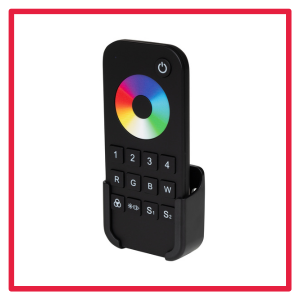Lighting brightness control - what is PWM dimming technology?

LED lighting brightness controllers (dimmers) for LED strips are essential devices installed between the constant voltage (CV) power supply and the LED strip. They allow precise brightness control and smooth brightening of the lighting when switched on. Brightness control is carried out using PWM (Pulse Width Modulation). The PWM dimming technique is one of the most commonly used methods for regulating the brightness of LED lighting. It involves rapidly switching a light source on and off in such a way that the human eye perceives this as a reduction or increase in luminous intensity. A key aspect of PWM is the change in pulse width, which means that the longer a light is on during one cycle, the brighter it will appear.
One of the main advantages of PWM dimming technology is its energy efficiency. Because the LEDs are switched on and off instead of reducing voltage, there is no power loss that occurs with traditional brightness control methods. This makes PWM ideal for lighting systems that require precise brightness control with minimal energy consumption.
PWM is used in a wide range of applications, from domestic to industrial lighting to automotive applications. Thanks to its reliability and flexibility, the technique is also used in advanced lighting systems such as intelligent lighting or stage lighting effects. Thanks to its ability to precisely regulate brightness, PWM allows the creation of a comfortable and energy-efficient lighting environment, tailored to the individual needs of the users.
